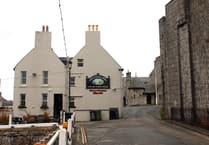The Manx government could be potentially exposed to civil claims arising out of asbestos in schools, an island advocate claims.
Ian Kermode has submitted a series of Freedom of Information requests on the issue after he was contacted several months ago by a parent of a child attending a primary school in the north of the island.
They had raised a concern about possible exposure to asbestos containing materials (ACMs), which have been linked to cases of lung cancer and mesothelioma.
But Mr Kermode said that from the FoI responses he’s received ‘it’s not clear which schools contain asbestos containing materials or whether all statutory duties are being fully complied with’.
He said: ‘Plainly, the government owes a duty of care to those entering its schools, whether pupils, teachers, parents or visiting tradespersons.
‘In the circumstances, the Manx government remains potentially exposed to civil claims under employers liability, public liability, occupiers’ liability and negligence.’
He asked if an audit of these materials had been carried out – and if not, why not? Mr Kermode asked how many schools have ACMs in, for instance, ceiling tiles, insulation and roofing, what risks assessments have been carried out, whether pupils, parents and staff had been properly notified of any potential hazards and whether there had been any cases of lung cancer and mesothelioma linked to schools in the island.
The department declined to provide the information, and instead referred him to the Department of Infrastructure and the Health and Safety at Work Inspectorate, explaining that all records on ACMs had been transferred to the DoI in 2012 when education works services were centralised.
inspection
In response to a follow-up FoI, the Health and Safety at Work Inspectorate confirmed that it ‘has never undertaken an inspection for asbestos containing materials in any IoM school (primary or secondary)’.
It added: ‘The HSWI would not undertaken inspections looking for ACMs in Isle of Man schools. However, the Inspectorate could ask schools and the DoI how they had complied with their duty to manage asbestos within schools.’
In its response, the DoI said that it wasn’t until 1999 that all types of asbestos were banned in the UK and any building constructed before that date would be likely to have materials containing asbestos somewhere inside.
Routine surveys had been carried out over the last 20 years, it said, and every building surveyed would have been issued a copy of the relevant asbestos management plan. Every school will have had such a plan from 2005, it added.
It said that it is currently carrying out a ‘gap analysis’ to identify buildings which require the management survey to be reviewed.
But it said that it will take time to update asbestos registers, given the number of government buildings. An asbestos management policy is still in draft form and is currently being revised and updated for final approval and implementation, it said.
The department said the Control of Asbestos regulations came into force last August which require duty holders to identify and manage asbestos in non-domestic premises.
Before any works are carried out on schools, a targeted refurbishment survey is carried out to identify any hazardous materials, ensure works are safe to proceed, and contractors are fully aware of any potential risks, it said.
assessment
Garff MHK Daphne Caine this month tabled a Tynwald question to Chief Minister Alfred Cannan, in his capacity as interim Infrastructure Minister, asking what assessment has been undertaken to identify the presence of asbestos in schools and government buildings, and what works are scheduled to remove it.
Mr Cannan replied: ‘The DoI and its predecessors have endeavoured to be pro-active and have, over the last 20 years, carried out routine surveys in government buildings, including schools.
‘Isle of Man legislation acknowledges that any buildings constructed before 2000 are likely to have materials containing asbestos within the building. The department is currently carrying out a gap analysis to identify buildings which require the management survey to be reviewed.
‘Due to the method of building construction, it is not always feasible to remove all the asbestos containing materials from a building. However, the department does seek to do this on an opportunistic basis prior to any planned works being undertaken.’




